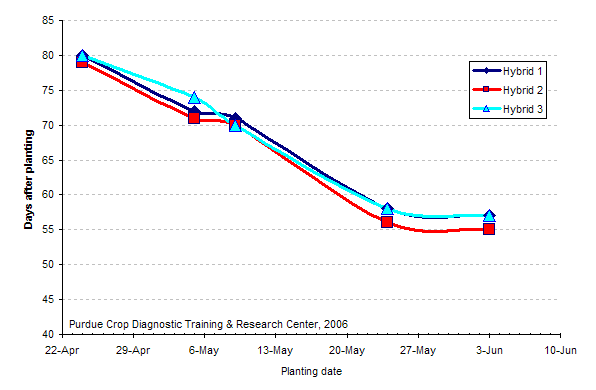

![]() he
ragged tall/short corn appearance of the hundreds, if not thousands, of Indiana
fields that were partially replanted back in late May and early June following
the atrocious emergence of most anything planted from May 5 through May 10 have
dogged growers’ outlooks on life ever since. Many of those replanted areas are
finally coming into the pollination period; later than desired but earlier than
might be expected given the difference in planting dates between the original
and replanted parts of the fields.
he
ragged tall/short corn appearance of the hundreds, if not thousands, of Indiana
fields that were partially replanted back in late May and early June following
the atrocious emergence of most anything planted from May 5 through May 10 have
dogged growers’ outlooks on life ever since. Many of those replanted areas are
finally coming into the pollination period; later than desired but earlier than
might be expected given the difference in planting dates between the original
and replanted parts of the fields.
As I pointed in an earlier article (Nielsen, 2006), later planted corn tends to “catch up” by moving through parts of its life cycle more quickly. The accompanying graph depicts the decrease in number of days from planting to silking for three hybrids planted across a range of dates in west central Indiana in 2006 (Fig. 1).

Fig. 1. Days from planting to 50% silk emergence for three corn hybrids planted
across a range of dates in west central Indiana, 2006.
All three hybrids planted May 5 at the beginning of the so-called “evil planting window” flowered 71 – 74 days later in mid-July. The same three hybrids planted 29 days later on June 3 were flowering late last week (late July); only 55 – 57 days after planting.
Even though the two planting dates varied by 29 days, the silking dates only varied by 12 to 14 days. Obviously, two weeks difference in flowering within a field still represents the potential for significant grain moisture differences at harvest. However, because late-planted corn “catches up” to a degree, the grain moisture differences will not be as large as some growers may have originally feared.
Nielsen, R.L. (Bob). 2006. Late Planting/Replanting & Relative Hybrid Maturity. Corny News Network, Purdue Univ. Online at http://www.kingcorn.org/news/articles.06/HybridMaturity-0516.html [URL verified 7/31/06].
© 2006 , Purdue University, an equal access, equal opportunity university. This material may be available in alternative formats. If you have trouble accessing this page because of a disability, please contact RLNielsen at rnielsen@purdue.edu.